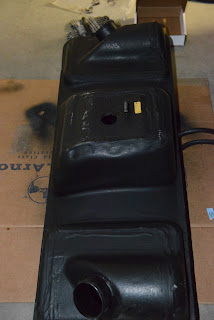I had to sell the W460 featured in this blog because I had too many cars here and needed some quick cash. I listed it for what I considered a fair price with 3 other cars and got a ton of calls for the 300GD - the other cars, not so much. Short story, in 24 hours the 300GD Turbo was sold.
I missed driving my 300GD Turbo SWB so much that it was not long before the bug hit me, and I started looking online, not really to buy but just to look and see what was out there. After a while, I thought it would be cool to find a mid-1990's example and transplant an OM 606.964 ERE or OM 606.962 ERE 6 cylinder turbocharged diesel with a 5-speed. That sounds cool, right?
Just for fun I started going out and test driving some G-Wagons for sale. Not that I was going to buy anything but just to do research for a future purchase. I drove a 1991 300E, a 2005 Supercharged G500 AMG and a few other less memorable G-Wagons. By the way, the supercharged AMG is sick fast. Something just felt wrong going 0-60 in 5.4 seconds in something that felt like a tank. The 300GE was surprisingly quick and responsive. Fun times!
 We decided to drive our Jeeps over and use two cars to jump-start the beast. It cranked up and was very rough. My immediate thinking was it needed glow plug work or the diesel pre-chambers had carbon build up because after it warmed up, it drove pretty well.
We decided to drive our Jeeps over and use two cars to jump-start the beast. It cranked up and was very rough. My immediate thinking was it needed glow plug work or the diesel pre-chambers had carbon build up because after it warmed up, it drove pretty well.
Just for fun I started going out and test driving some G-Wagons for sale. Not that I was going to buy anything but just to do research for a future purchase. I drove a 1991 300E, a 2005 Supercharged G500 AMG and a few other less memorable G-Wagons. By the way, the supercharged AMG is sick fast. Something just felt wrong going 0-60 in 5.4 seconds in something that felt like a tank. The 300GE was surprisingly quick and responsive. Fun times!
Then it happened, somebody drove a 1990 W461, Puch Austrian Military 300GD into town and was selling it. The owner was on vacation, but with the owner's permission my friend and I drove over to look it over.
The truck was soo cool. It was a 300GD, LWB, Cabrio, 4-speed manual with a naturally aspirated OM614. On top of that, it had jump seats for eight bringing the total to 10 passengers including the driver! We tried to start it but it was DEAD! The issue was the 24v electrical system could not be simply jump-started with one car.
 We decided to drive our Jeeps over and use two cars to jump-start the beast. It cranked up and was very rough. My immediate thinking was it needed glow plug work or the diesel pre-chambers had carbon build up because after it warmed up, it drove pretty well.
We decided to drive our Jeeps over and use two cars to jump-start the beast. It cranked up and was very rough. My immediate thinking was it needed glow plug work or the diesel pre-chambers had carbon build up because after it warmed up, it drove pretty well.
The front end exhibited no noise, there were a few small rust bubbles at the bottom of the wheel wells and on the windshield, an engine oil leak, and seepage from the front differential and the transfer case. All pretty normal stuff. The soft top was in pretty good shape, some clouding, and one cracked window but all was very serviceable. The front headlights and the heater blower did not work.
So in a moment of weakness, I made an offer and bought it. The engine leak turned out to be a loose oil drain plug, a quick reaming of the prechambers and diesel purge solved the rough start issue. Headlights turned out to be blown low beam bulbs and as it turns out it even holds a charge. This could be a daily driver!
My current plans are to give it a good once over mechanically and have the minor rust issues resolved before they get out of control. Driving it around I get a lot of: "What is that?" and "Where did you get that?" and "Can I get a photo?" I have not decided what to do long-term, but you will hear about it here. How does it drive? Well.. lets just say it is a lot more spartan and just bit slower than the 2005 AMG! Can you say "Ari Safari?"


































